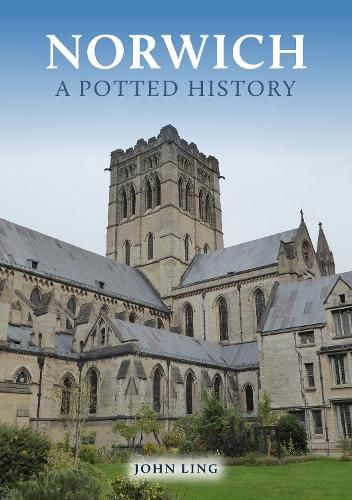Readings Newsletter
Become a Readings Member to make your shopping experience even easier.
Sign in or sign up for free!
You’re not far away from qualifying for FREE standard shipping within Australia
You’ve qualified for FREE standard shipping within Australia
The cart is loading…






During the Iron Age, much of East Anglia was under the control of the Iceni tribe, whose queen Boudicca is believed to have been born close to present-day Norwich. The roots of the fledgling settlement, then known as Northwic, were laid down in the sixth century and city status was granted by Richard I in 1194. Following the Norman Conquest, Norwich Castle and Cathedral were constructed and a monastery existed alongside the cathedral until the Dissolution. For several centuries Norwich was one of the largest cities in England, becoming an important centre of trade and industry. Key industries included weaving, brewing, shoe making, milling, printing, chocolate making, mustard production and the manufacture of Christmas crackers. The city also gave its name to the insurance giant Norwich Union and was a major banking centre. Norwich suffered many air raids during the Second World War and countless buildings were destroyed, but today it is acknowledged as a centre of the written and performing arts and is a growing tourist destination, with one of the largest outdoor covered markets in Europe.
Illustrated throughout, this accessible historical portrait of the transformation that Norwich has undergone through the ages will be of great interest to residents, visitors and all those with links to the city.
$9.00 standard shipping within Australia
FREE standard shipping within Australia for orders over $100.00
Express & International shipping calculated at checkout
During the Iron Age, much of East Anglia was under the control of the Iceni tribe, whose queen Boudicca is believed to have been born close to present-day Norwich. The roots of the fledgling settlement, then known as Northwic, were laid down in the sixth century and city status was granted by Richard I in 1194. Following the Norman Conquest, Norwich Castle and Cathedral were constructed and a monastery existed alongside the cathedral until the Dissolution. For several centuries Norwich was one of the largest cities in England, becoming an important centre of trade and industry. Key industries included weaving, brewing, shoe making, milling, printing, chocolate making, mustard production and the manufacture of Christmas crackers. The city also gave its name to the insurance giant Norwich Union and was a major banking centre. Norwich suffered many air raids during the Second World War and countless buildings were destroyed, but today it is acknowledged as a centre of the written and performing arts and is a growing tourist destination, with one of the largest outdoor covered markets in Europe.
Illustrated throughout, this accessible historical portrait of the transformation that Norwich has undergone through the ages will be of great interest to residents, visitors and all those with links to the city.